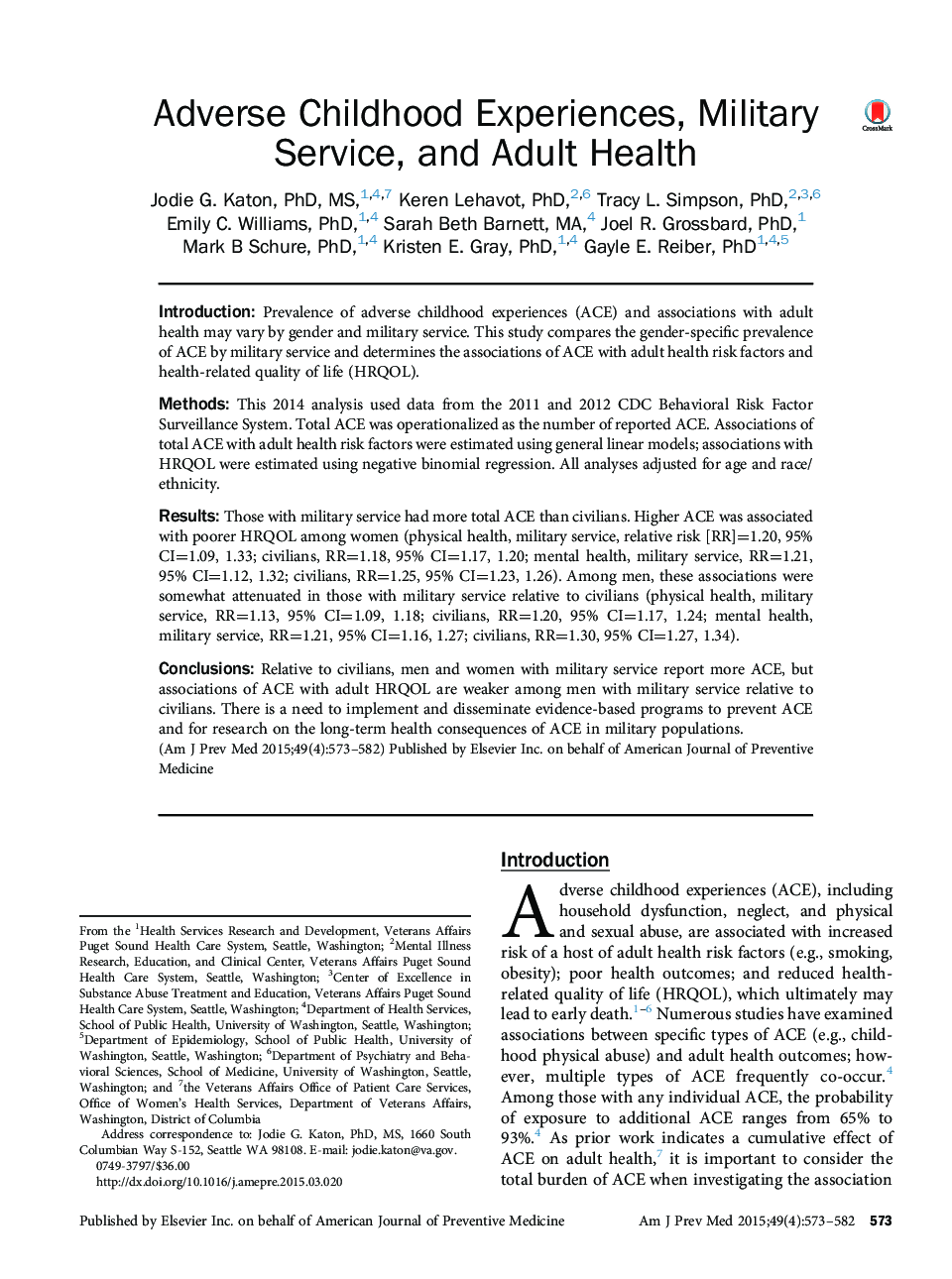| Article ID | Journal | Published Year | Pages | File Type |
|---|---|---|---|---|
| 6237675 | American Journal of Preventive Medicine | 2015 | 10 Pages |
IntroductionPrevalence of adverse childhood experiences (ACE) and associations with adult health may vary by gender and military service. This study compares the gender-specific prevalence of ACE by military service and determines the associations of ACE with adult health risk factors and health-related quality of life (HRQOL).MethodsThis 2014 analysis used data from the 2011 and 2012 CDC Behavioral Risk Factor Surveillance System. Total ACE was operationalized as the number of reported ACE. Associations of total ACE with adult health risk factors were estimated using general linear models; associations with HRQOL were estimated using negative binomial regression. All analyses adjusted for age and race/ethnicity.ResultsThose with military service had more total ACE than civilians. Higher ACE was associated with poorer HRQOL among women (physical health, military service, relative risk [RR]=1.20, 95% CI=1.09, 1.33; civilians, RR=1.18, 95% CI=1.17, 1.20; mental health, military service, RR=1.21, 95% CI=1.12, 1.32; civilians, RR=1.25, 95% CI=1.23, 1.26). Among men, these associations were somewhat attenuated in those with military service relative to civilians (physical health, military service, RR=1.13, 95% CI=1.09, 1.18; civilians, RR=1.20, 95% CI=1.17, 1.24; mental health, military service, RR=1.21, 95% CI=1.16, 1.27; civilians, RR=1.30, 95% CI=1.27, 1.34).ConclusionsRelative to civilians, men and women with military service report more ACE, but associations of ACE with adult HRQOL are weaker among men with military service relative to civilians. There is a need to implement and disseminate evidence-based programs to prevent ACE and for research on the long-term health consequences of ACE in military populations.
